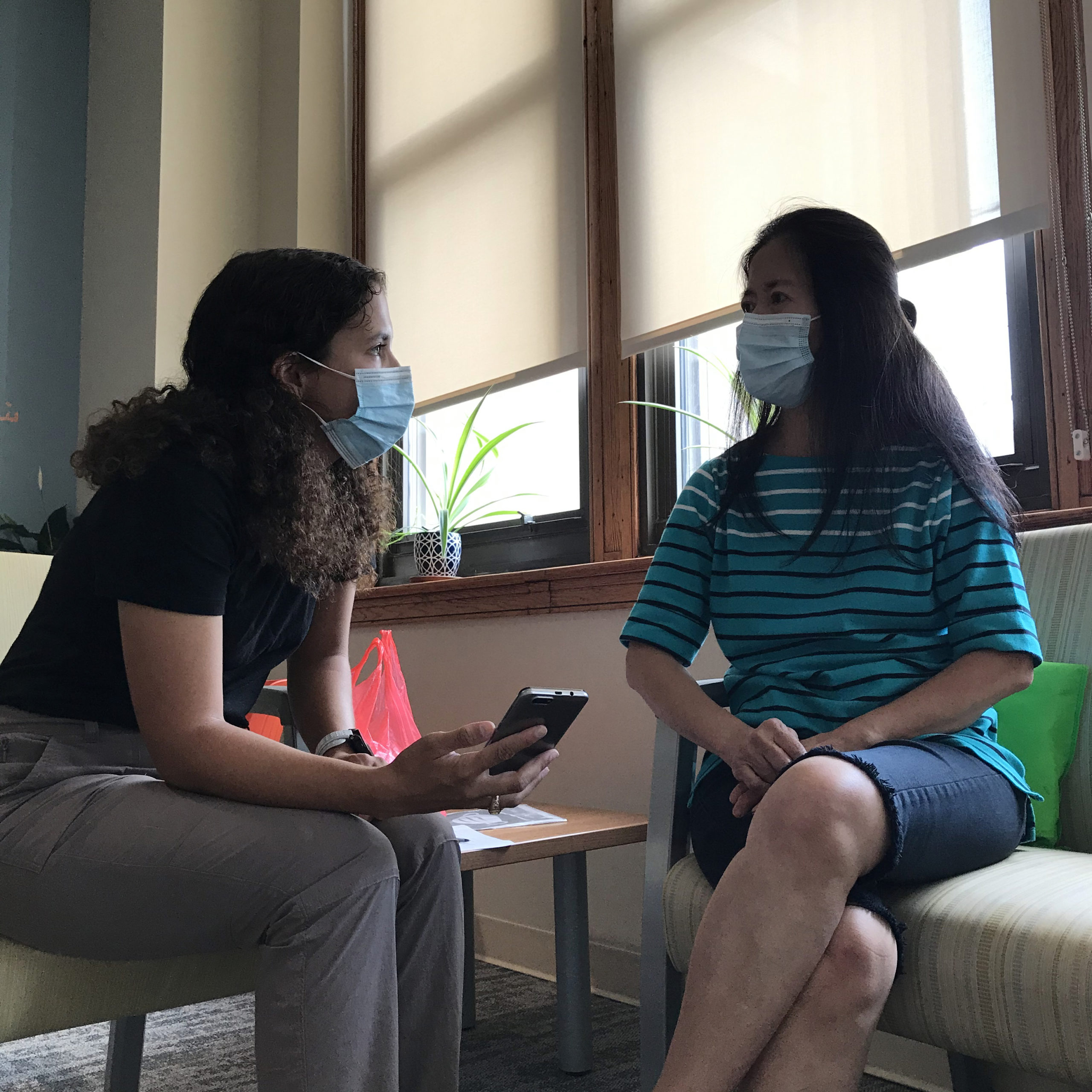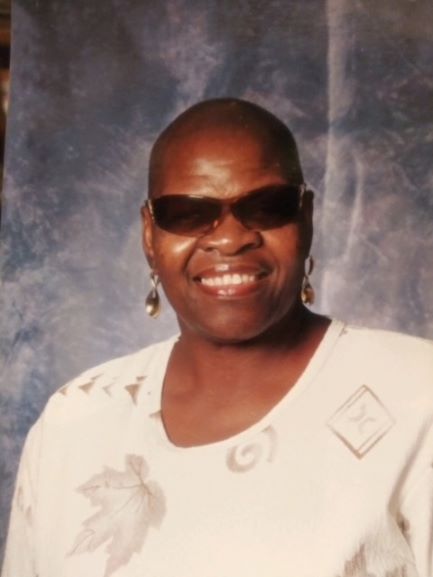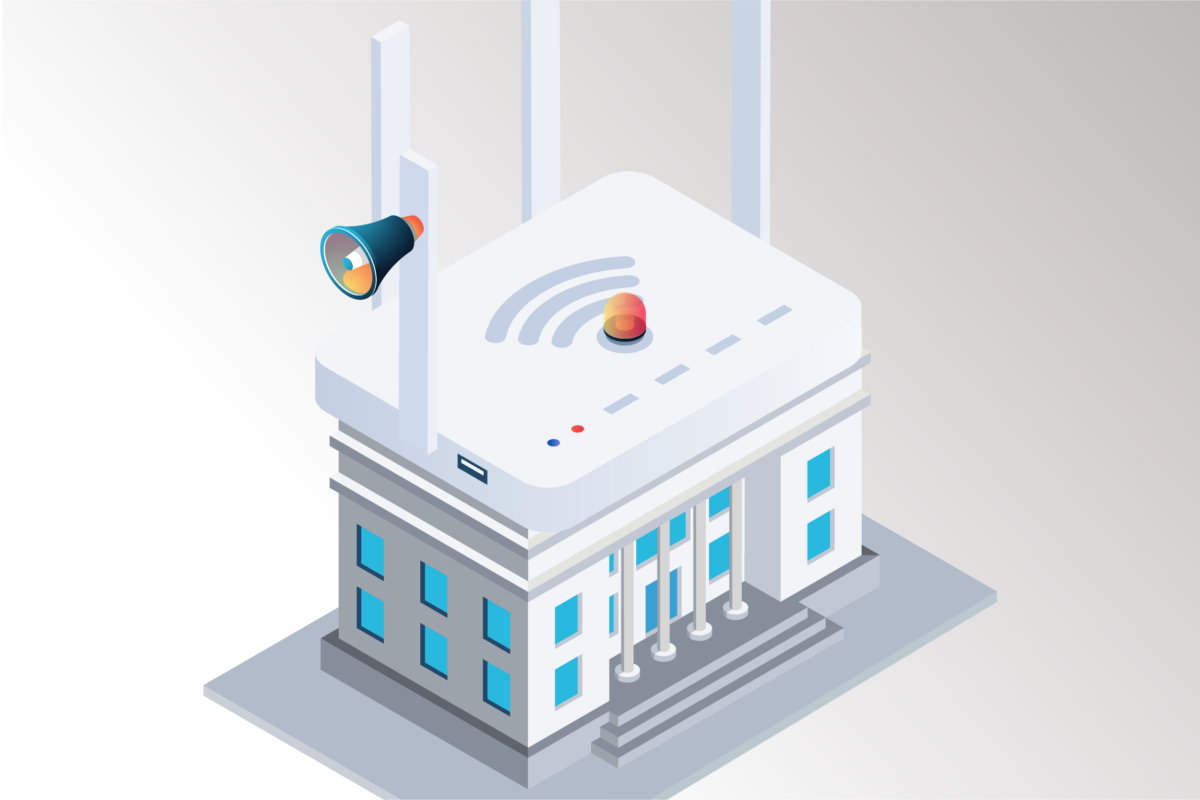Marguerite Woods has called the Emergency Broadband Benefit (EBB) registration line for help eight different times since June.
Most recently, the registration portal required her to upload a letter verifying that she receives food stamps. But since she is blind, she can’t find the letter.
“They don’t set it up to make it accessible,” she told Technical.ly from her home in the Gwynn Oak neighborhood of Baltimore.
Woods is just one of the many people who have struggled to enroll in the internet aid program. Launched in May 2021 through federal stimulus dollars, the EBB is a subsidy designed to help close the digital divide that the COVID-19 pandemic has exacerbated. It provides a temporary discount up to $50 per month for internet as well as up to $100 off a computer, laptop, or tablet to low-income households and those who experienced a substantial loss of income during the COVID pandemic.
Following aid packages to protect employment, small businesses and housing, the EBB was an acknowledgement by policymakers that internet access was just as important at a time when society was shifting increasingly online. Yet where the launch of other programs saw systems flooded with applications, uptake for this one has been slower.
Only an estimated one in seven eligible households have enrolled so far. The majority of those who have received the benefit were grandfathered in through an existing federal subsidy program aimed primarily at telephone users, known as Lifeline. Accessibility, language barriers, and documentation requirements have beset a number of potential applicants. Most people are unaware that the EBB exists at all.
Interest has been uneven, as some cities have enrolled a much higher percentage of residents than others. Preliminary ZIP code-level analyses from the Benton Institute of Broadband and Society last month show that Philadelphia has enrolled more people than Chicago, even though Chicago has over 1 million more residents. Baltimore has enrolled more people than Phoenix and Houston, both of which dwarf Baltimore in population.
These data are consistent with trends that researchers observed, noted John Horrigan, a senior fellow at the Benton Institute and the author of the recent EBB analysis. Baltimore, for instance, has consistently ranked among the country’s “Worst Connected Cities” — 40% of households lack wireline internet access, per an Abell Foundation report — so it follows that a high population of residents might enroll. Internet service provider Comcast is headquartered in Philadelphia and has made substantial philanthropic community investments, including the creation of a low-cost internet plan known as Internet Essentials, which is also available in other coverage areas. Comcast representatives noted that the company has invested in outreach efforts to encourage eligible customers enroll in the EBB across various markets, though they declined to comment on any outsized efforts in Philadelphia.
Nationally, the seemingly low enrollment rate is consistent with other federal benefits, like the Low Income Home Energy Assistance Program that subsidizes heating, cooling, and weatherizing.
In Philadelphia, community leaders have organized to boost enrollment. Along with the federal government that provides funding and the telecommunications companies that distribute it, this third group provides more personalized assistance for residents. Their efforts may explain why places like Philadelphia are seeing higher turnout than other cities.
Juliet Fink Yates has been working for the past 10 years with more than 40 local computer labs to end the digital divide in Philadelphia. Just a month before the pandemic, she joined the City of Philadelphia to expand that work, including a new effort to create a “digital navigator” program whereby residents could get individualized support with technology. Last year, the navigators helped households enroll in a collaborative called PHL ConnectED, a city initiative which offers free internet, computers, and digital literacy training for families with students in grades K-12. Those same navigators began enrolling adults to the EBB when the program went live in May.

Hannah Aragon is one such digital navigator working through SEAMAAC, an immigrant and refugee-serving organization in Philadelphia. Her experience helping eligible families illustrates the challenges that individuals across the country are facing when it comes to enrollment and offers a tangible, if time-intensive solution. In June, she connected with an applicant, Grace Zhang, who at first asked about using the EBB to acquire home internet, which she has never had before. But when Zhang learned that the EBB could cover the cost of mobile data and the purchase of a new phone, she decided to use the benefit for that instead. Her decision is consistent with national data, too, whereby most EBB subscribers so far have used the benefit for their phone bills.
Aragon struggled to assist Zhang using the Indonesian interpreter she had set up over the phone.
As the interpretation faltered, Zhang began practicing her English on Aragon, and Aragon soon invited her into the Hansjörg Wyss Wellness Center so they could figure out the EBB in person, together. The Wellness Center sits within a repurposed vocational high school with detailed Art Deco designs and looming walls that make it the tallest building among rowhomes in South Philadelphia. Zhang and Aragon met there three times over the course of two months: first, to make sure that Zhang’s EBB application was received; second, to activate the phone only to realize that the phone company had given Zhang a new number she didn’t want; and finally, to reactivate the phone with Zhang’s old number.
By the time they had finally secured Zhang’s phone and data through the EBB, they had become close.
“Like my daughter!” laughed Zhang. “So pretty!” she said when describing Aragon’s green eyes, leading to even more laughter.
Zhang’s tone changed when she discussed her experience with the phone company, TruConnect.
“Not patient,” she said decidedly.
Aragon is quick to interpret and contextualize. “Believe it or not,” she said, “this company has by far the best customer service of the Lifeline companies.” (Lifeline is another federal benefit that works in conjunction with the EBB.)
While less blunt than Zhang, Aragon was passionate when speaking about the systemic challenges of the EBB. Because the federal government reimburses the companies, not the customers, she spends hours on three-way calls, helping residents parse through customer service menus with the federal enrollment agency and with internet or cell phone providers.
“These companies are so picky with these applications, and they’re very slow with applying the discount in general,” Aragon said.

One of her clients spent two months going back-and-forth with Verizon after the company applied his EBB discount but erroneously removed other discounts in the process. The result left him paying more than he could afford. A slight discrepancy in another client’s address abbreviation has lost her four months, as much as $200, of needed assistance from Comcast Xfinity.
Comcast representative Joel Shadle noted the issue of address abbreviations and acknowledged his team has had to evolve. He reaffirmed that Comcast has handled the matter at an institutional level and is committed to getting households the support they need.
Even with the vocal support from telecommunications executives, most of Aragon’s clients still take weeks, sometimes months, of tailored assistance to get the EBB. The biggest challenge for enrollment, she explained, are undocumented adults. They represent roughly 20% of her clients, and while some may be eligible for the EBB, the identification requirements often prevent individuals from ever receiving it.
Meanwhile, in Baltimore, Woods was still trying to enroll when interviewed by Technical.ly in late August. After she explained her challenge acquiring a letter showing her food stamps eligibility, a customer service representative with the federal government recommended that she restart the EBB enrollment process once again, this time using a different income verifier. She is part of the BDS Healthy Aging Networks, which organizes Baltimore seniors around health, available services, and community issues. Recently, the group partnered with the Baltimore Digital Equity Coalition’s tech support hotline to help seniors like Woods with tech services, and there is growing momentum across the city to establish a digital navigator program similar to Philadelphia.
While the EBB is designed to expire when funds run out in the fall, the infrastructure bill that passed the U.S. Senate includes a proposal to rebrand but ultimately continue the EBB, albeit at a maximum discount rate of $30 a month for internet.
Woods isn’t aware of the Senate bill, though. She is worried that if she doesn’t get the benefit soon that her time will run out.







